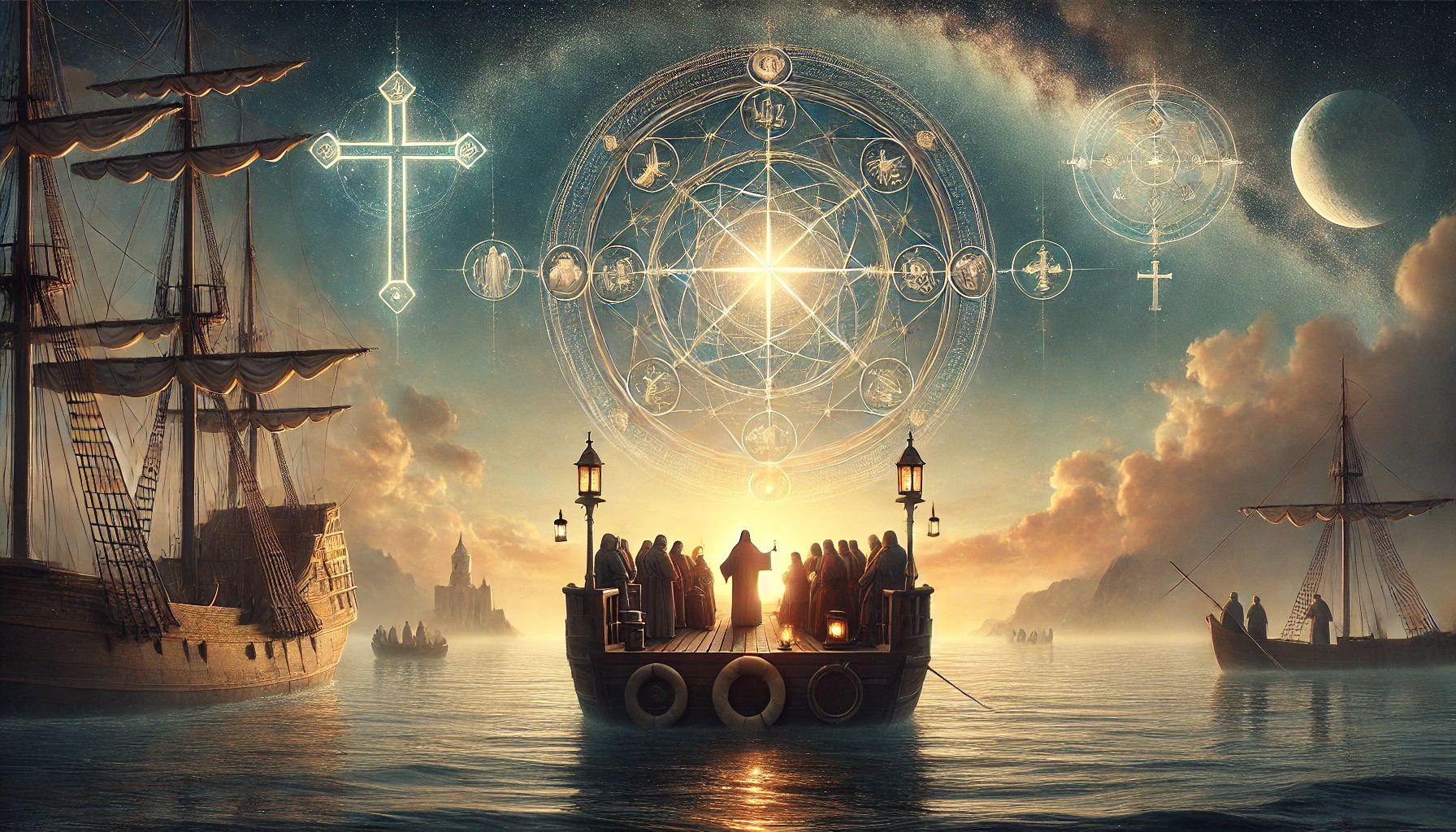Throughout history, seafaring has been a vital part of human exploration and trade. Many cultures developed deep connections between their maritime practices and their religious beliefs. This connection reveals how ancient sailors turned to the divine for guidance and protection against the dangers of the sea.
Religious rituals and deities often shaped the lives of seafarers, who sought favor from the gods before embarking on journeys. From the Phoenicians to Greek sailors, these beliefs influenced not only their navigation but also their eventual cultural practices. Understanding this aspect of maritime history provides insight into the ways spirituality shaped the experiences of those who dared to navigate the unknown waters.
As one explores the intricate relationship between seafaring and religion, intriguing patterns emerge. The fears and hopes of sailors often mirrored their faith, leading to unique expressions of devotion across different cultures. This article will explore how these spiritual connections influenced seafaring traditions throughout history.
Historical Overview of Seafaring and Religion
Seafaring has long been intertwined with religious beliefs and practices. Ancient cultures revered the sea, associating it with various deities and mythologies that shaped their maritime activities.
Ancient Maritime Cultures and Their Deities
Ancient maritime cultures, such as the Phoenicians and Greeks, had rich religious traditions tied to the sea. They worshiped gods like Poseidon, the Greek god of the sea, who was believed to control ocean storms and protect sailors.
Each of these cultures had rituals to honor the sea gods before voyages. Offerings like sacrifices and prayers were common, as sailors sought favor and protection during dangerous journeys. The Phoenicians, known for their trading skills, dedicated temples to their deity Melqart, connecting their maritime success to divine favor.
Mythology and Sea Voyages
Mythology played a significant role in shaping seafaring practices. Stories of heroes and sea monsters created a framework for understanding the ocean’s dangers.
Tales like those of Odysseus recounted perilous journeys, emphasizing the importance of invoking divine help. These myths also explained natural phenomena, making the unpredictable sea feel more understandable.
By incorporating these stories into their culture, sailors gained a sense of purpose and courage. Believing in protective deities helped ease their fears, allowing them to embark on risky adventures across vast waters.
Symbolism and Rituals in Maritime Traditions
Maritime traditions are rich with symbolism and rituals that reflect a deep connection to belief systems. These practices often enhance the spiritual significance of seafaring activities and ensure safety and good fortune at sea.
Ship-Naming and Launch Ceremonies
Naming a ship is a significant event steeped in tradition. A ship often receives a name that reflects its mission, history, or design. This act is more than a formality; it’s a rite that invokes protection and blessings from higher powers.
Launch ceremonies frequently involve rituals like breaking a champagne bottle on the hull. This symbolizes good luck and prosperous voyages. Inviting community members to participate fosters a sense of unity and connection to the vessel, which is considered a vital part of the crew’s identity.
Religious Rites at Sea
Religious rites conducted at sea serve important functions for sailors. These rituals might include prayers, offerings, or ceremonies dedicated to deities believed to govern the waters. For many, performing these acts can provide comfort and assurance during uncertain journeys.
Maritime cultures often hold formal services or personal moments of reflection to seek safety. Customs can vary widely, from lighting candles to casting flowers into the sea, each with unique cultural meanings. These practices highlight the blend of everyday life and spirituality, reinforcing the sailors’ bond with the ocean.
Sailors’ Beliefs and Superstitions
Sailors have carried numerous beliefs and superstitions through history. These often served to provide comfort and a sense of control while grappling with the unpredictable nature of the sea. Understanding these beliefs gives insight into their way of life.
Protection and Luck
Many sailors believed that certain practices could protect them and attract good luck on their journeys. One common belief was that harming dolphins could bring misfortune. Sailors respected these creatures, viewing them as guardians of the sea.
Another popular superstition involved lucky charms. Items like a piece of wood, a special coin, or even a specific knot could be thought to bring good fortune. Some would perform rituals before setting sail, such as spilling a drink overboard as an offering to the sea gods.
Navigational Omens and Portents
Sailors also paid close attention to omens and signs while navigating the waters. For instance, spotting a bird like a seagull was often seen as a positive sign, indicating land was nearby.
Conversely, some signs brought a sense of dread. Seeing a black cat or a broken mirror was thought to signal trouble ahead. Weather patterns were closely monitored, and a sudden change could be interpreted as a warning from the sea.
These beliefs helped sailors feel more connected to their environment and provided a framework for understanding the dangers they faced.
Modern Seafaring and Spiritual Customs
Modern seafaring reflects a blend of old traditions and new practices. Spiritual customs continue to play an important role in the lives of sailors today, offering a sense of purpose and community on the water.
Continuity and Change in Seafaring Traditions
Seafaring cultures have long respected the ocean’s power, often intertwining their beliefs with their maritime practices. Many sailors still observe traditional rituals, like offering a toast to the sea for safe voyages, rooted in ancient customs.
Yet, modern influences shift these practices. For instance, while some sailors hold onto time-honored ceremonies, others adopt new customs that reflect current beliefs about nature and the environment. This mix helps create a unique identity for contemporary mariners.
Contemporary Religious Observances Onboard
Today, sailors incorporate various religious observances to maintain their spiritual lives at sea. On many vessels, crew members may dedicate time for prayer or meditation, regardless of their specific faith.
Some ships hold regular services that cater to multiple religious backgrounds. The diverse crew often reflects a wide range of beliefs, making gatherings meaningful.
Special days, like Christmas or Ramadan, may have specific traditions onboard. Sailors work together to ensure spiritual needs are met, creating a supportive environment amidst the challenges of maritime life.

